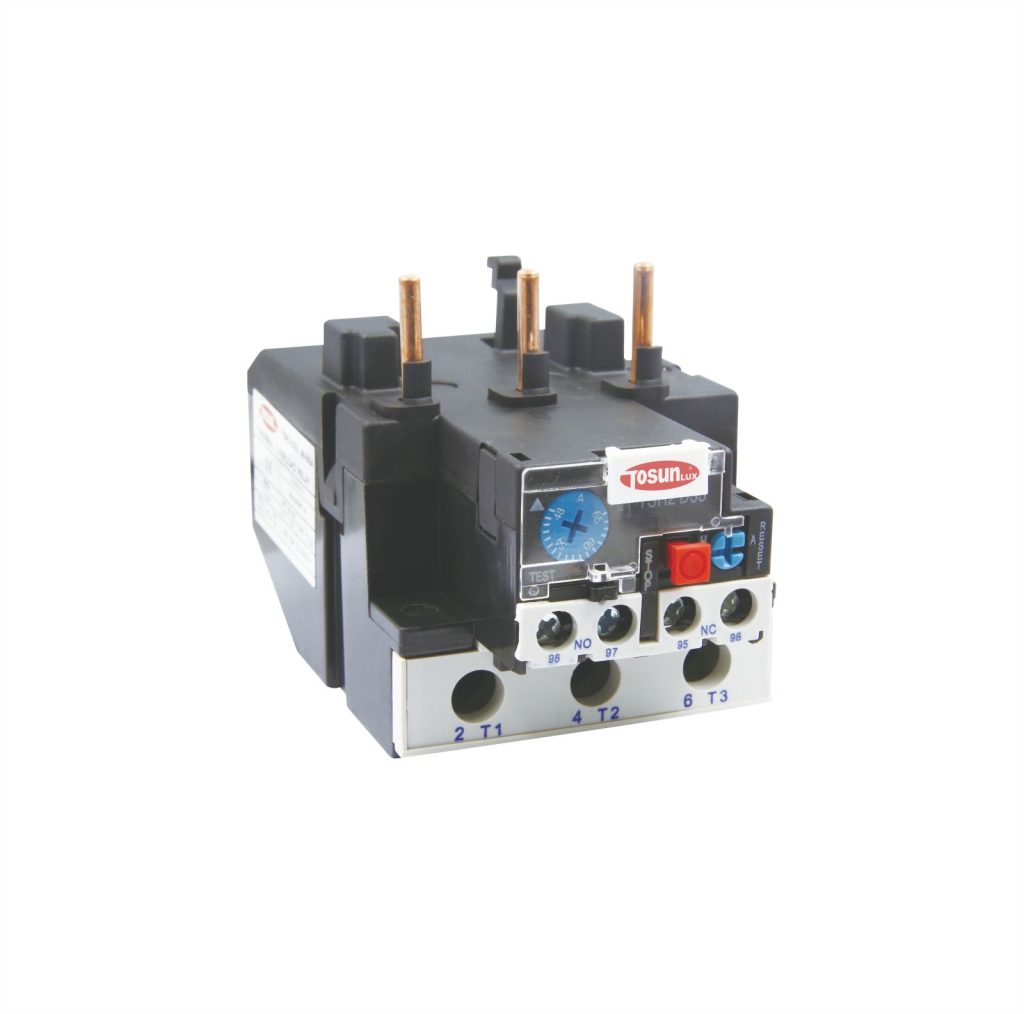Everything You Need to Know About Thermal Overload Relay
Table of Contents
ToggleElectrical systems often face the risk of overheating due to excessive current flow, which can lead to equipment damage, safety hazards, and system failures. Thermal overload relays are crucial protective devices designed to monitor and protect electrical circuits from such thermal overloads. In this comprehensive guide, we will delve into the functioning, applications, and key considerations for thermal overload relays.
What is a Thermal Overload Relay?
A thermal overload relay is an electromechanical protection device that monitors the current flowing through an electrical circuit. It is typically used in combination with contactors or motor starters to protect motors and other electrical equipment from overheating due to excessive current. The relay operates based on the principle that increased current leads to a rise in temperature in the circuit components.
How Does a Thermal Overload Relay Work?
The thermal overload relay consists of a bimetallic strip and a tripping mechanism. The bimetallic strip is made of two different metals with different thermal expansion coefficients bonded together. When current passes through the relay, the heat generated causes the bimetallic strip to bend due to the differing expansion rates of the metals. As the current increases, so does the strip’s bending, which ultimately trips the relay.
The tripping mechanism operates based on the extent of bending of the bimetallic strip. When the strip reaches a critical point, it activates the tripping mechanism, which opens the electrical contacts of the relay, interrupting the circuit and stopping the current flow. Once the circuit cools down, the bimetallic strip returns to its original position, allowing the relay to reset.
Applications of Thermal Overload Relays
Thermal overload relays are widely used in various applications to safeguard electrical equipment and systems. Some of their primary applications include:
Motor Protection: They are commonly used to protect motors from overload conditions, such as excessive current draw due to mechanical faults or high load demands.
Industrial Machinery: Thermal overload relays offer protection for electrical components in machines and equipment used in manufacturing processes.
HVAC Systems: They are employed in heating, ventilation, and air conditioning systems to protect compressors and motors from overheating.
Pumps and Fans: Thermal overload relays safeguard pumps and fans used in various applications from damage caused by overcurrent situations.
Types of Thermal Overload Relays
Thermal overload relays come in different types, catering to various voltage and current requirements. Some common types include:
Class 10: These relays have a quick tripping response, typically designed for applications where rapid motor protection is essential.
Class 20: They offer a slower tripping response compared to Class 10 relays, making them suitable for applications that require longer starting times.
Manual Reset: In these relays, the tripped state must be manually reset by the operator after the relay has cooled down and the fault has been addressed.
Key Considerations for Thermal Overload Relays
When selecting and using thermal overload relays, certain factors need to be considered:
- Correct Sizing
- Ambient Temperature
- Motor Starting Current
- Adjustment Settings
- Testing and Maintenance
Tosunlux’s commitment to unmatched quality and craftsmanship is evident in each meticulously designed product, showcasing a perfect blend of aesthetics and durability.
Tel: +86-577-88671000
E-mail: ceo@tosun.com
Skype: tosunelectric
Wechat: +86-139 6881 9286
WhatsApp: +86-139 0587 7291
Address: Room No.1001 Wenzhou Fortune Center,Station Road, Wenzhou, China
REQUEST A QUOTE
WhatsApp us
 : +86-139 0587 7291
: +86-139 0587 7291 English
English Español
Español Русский
Русский Français
Français العربية
العربية Português do Brasil
Português do Brasil Українська
Українська Türkçe
Türkçe Polski
Polski Nederlands
Nederlands Italiano
Italiano Bahasa Indonesia
Bahasa Indonesia हिन्दी
हिन्दी اردو
اردو አማርኛ
አማርኛ Հայերեն
Հայերեն ไทย
ไทย Монгол
Монгол فارسی
فارسی Shqip
Shqip Ελληνικά
Ελληνικά




